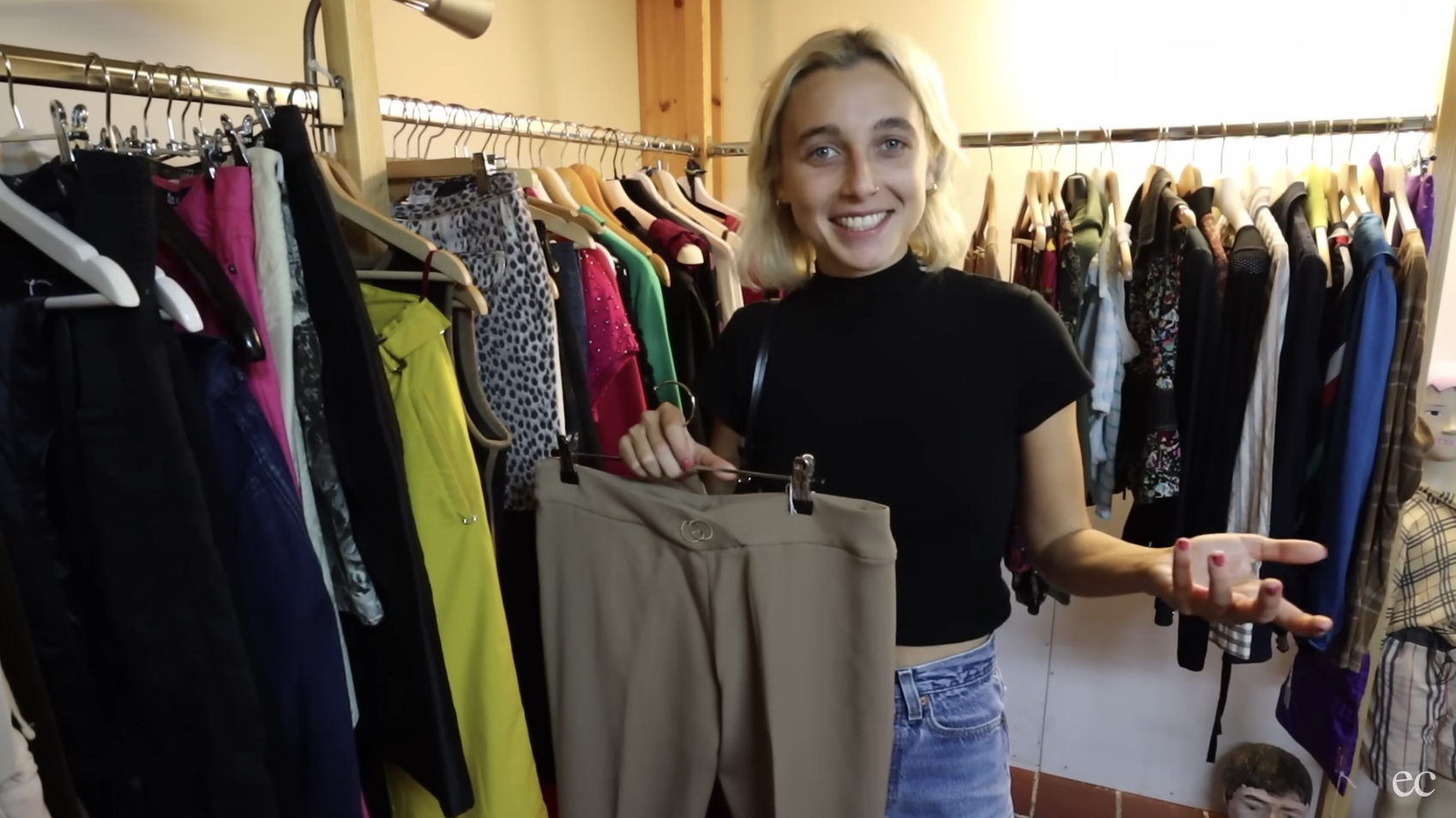There was once a time when thrift stores were simply associated with the scent of mothballs and endless racks of itchy sweaters and worn-out jeans in unstylish cuts. That time wasn’t actually that long ago. Back in the early 2000’s, second hand stores were frequented by thrifty shoppers and an older demographic—it was far from cool or trendy to go hunting for vintage tees and beat-up leather boots. Thrifting wasn’t so much of something that people tended to boast about but was instead something they did out of necessity. Though it was certainly possible to come across an incredible designer score for an unbelievable price.
Now, the tide has turned. It’s not only acceptable to rock a vintage getup, but it’s undeniably cool. A lot of that has to do with Gen Z’s nostalgia for Y2K fashion. Their desire to test drive denim mini skirts, teeny t-shirts and sporty sunglasses has them eschewing current designers and fast fashion sites for a vintage store that’ll have authentic goods from over two decades ago.
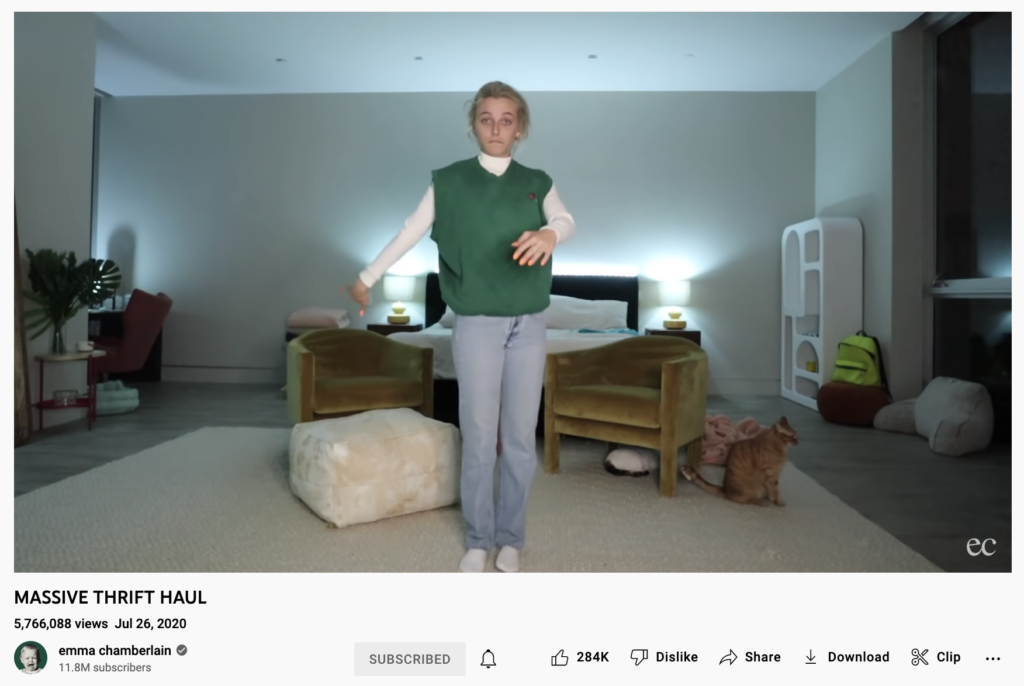
That’s even despite the fact that retailers have tried their very best to emulate the gritty aesthetic of early 2000s style: You can find lowrise jeans at Zara, khaki mini skirts at Miu Miu, plus a reissued Baguette bag at Fendi and a revamped Saddle bag from Dior. Gen Z wants the real deal and they actually like the sustainability factor behind these not-new pieces. This generation doesn’t mind putting a little elbow grease into the hunt for the clothing and accessories that Millennials thought were left behind in their high school days, especially when it makes for an epic IG post.
Younger celebrities are also bringing some allure to the concept of wearing clothes that were once owned by someone else. Mega influencer Emma Chamberlain (16 million followers on Instagram) has been a big thrifter, known for making YouTube vlogs about her hauls from thrift stores and Depop and designer vintage stores of Amsterdam. Bella Hadid is similarly always decked out in hard-to-find items from decades past, though her closet includes archival Vivienne Westwood and Jean Paul Gaultier, and it’s all documented via Vogue.

Another celeb thrifter is pop sensation Olivia Rodrigo, who has over 27 million followers on Instagram and who seems to adore anything plaid. In a picture taken at Disneyland, the “drivers license” singer rocks a decidedly vintage baby tee with a pink trucker hat that shouts “I <3 Fantasy,” styles them with some low-rise cargos and tops it all off with a Chanel bag (which, for the record, looks new). The result? Over 7.2 million likes and probably a scramble for trucker hats in the hours after she posted the picture.
Thanks to the rise of sites like Depop and Poshmark, those in search of replicating Rodrigo’s pink hat don’t have to book it to their local consignment shop. They could instead satiate their itch for instant gratification by scrolling through those resale sites for nearly any item you could imagine, from J’Adore Dior tees à la Paris Hilton during the Simple Life era to faded Wrangler jeans that cost just $12. These sites that sell thrifted clothing—and for a lot less than the designer threads are going for on The Real Real—are seeing a huge rise in sales thanks to this thrifting movement. In fact, there are now Depop influencers who have thousands of followers that track their every post on the resale site.
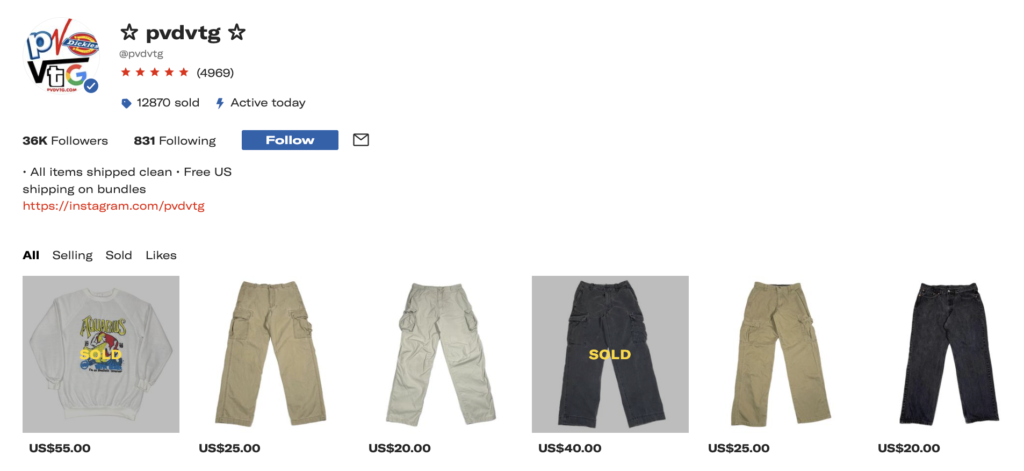
Depop influencers include actual influencers selling excess items, like Tess Holliday and Chiara Ferragni, but the real stars on the site are the thrift savvy sellers who have cool, one-of-a-kind products for relatively affordable prices. That includes @loserthrift with 67K followers and @pvdvtg who promises to their 26K followers that all items are shipped clean.
The rise of Depop as a social platform of sorts has led to an uptick of people filming their thrifting hauls, pricing details and all. It’s a way to boast about their thrifting scores and also share their expertise in finding such cool pieces. In a TikTok video captioned “the thrift gods slayed” @jbwells2 shared part 1 of her second-hand finds, featuring over a dozen ‘90s dresses and skirts. The haul racked up over 376K likes. However, this creator not only reveals her purchases, but also posts a few pieces to Depop and uses her TikTok to advertise that others can buy her thrift wins—without having to step foot in an actual thrift store.
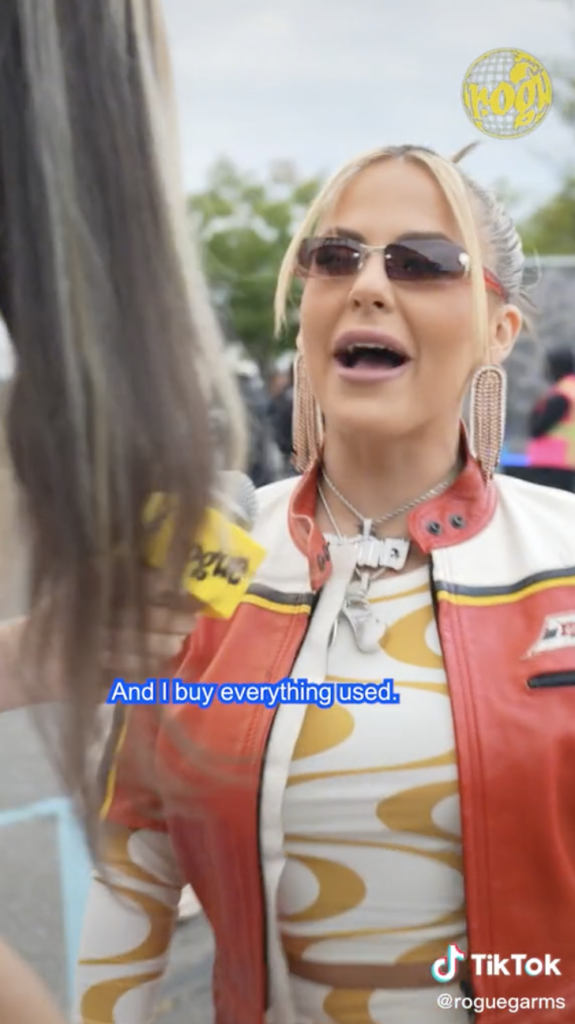
Quite a few brick and mortar vintage stores have adopted that tactic as well, using their TikTok pages to promote gotta-have-it pieces from previous decades. And some have unexpectedly hit viral success with this content. Rogue Garms, a Lower East Side thrift destination, uses their platform to share man on the street style interviews with vintage-loving strangers. Asking about their thrifted fits outfits, chatting about trends and posting fit checks that are far from #sponsored, @roguegarms has about 185K followers who are subtly driven to shop both in store and online.
Does this all mean brick and mortar vintage shops are over? Not quite. Gen Z still enjoys the experience of physically flipping through the racks, especially when it offers the opportunity to create a vlog to document their shopping adventure. But their enthusiasm for scouring these shops and selling back their fast fashion rejects in droves has made the authentic vintage shopping experience a thing of the past. The New York Times claimed ‘The Golden Age of Thrifting Is Over,’ blaming higher priced items on the higher donation rates (because that leads to steeper business costs in order to manage all of that inventory). And with more shoppers on the hunt, it can be harder than ever to find high-quality items.
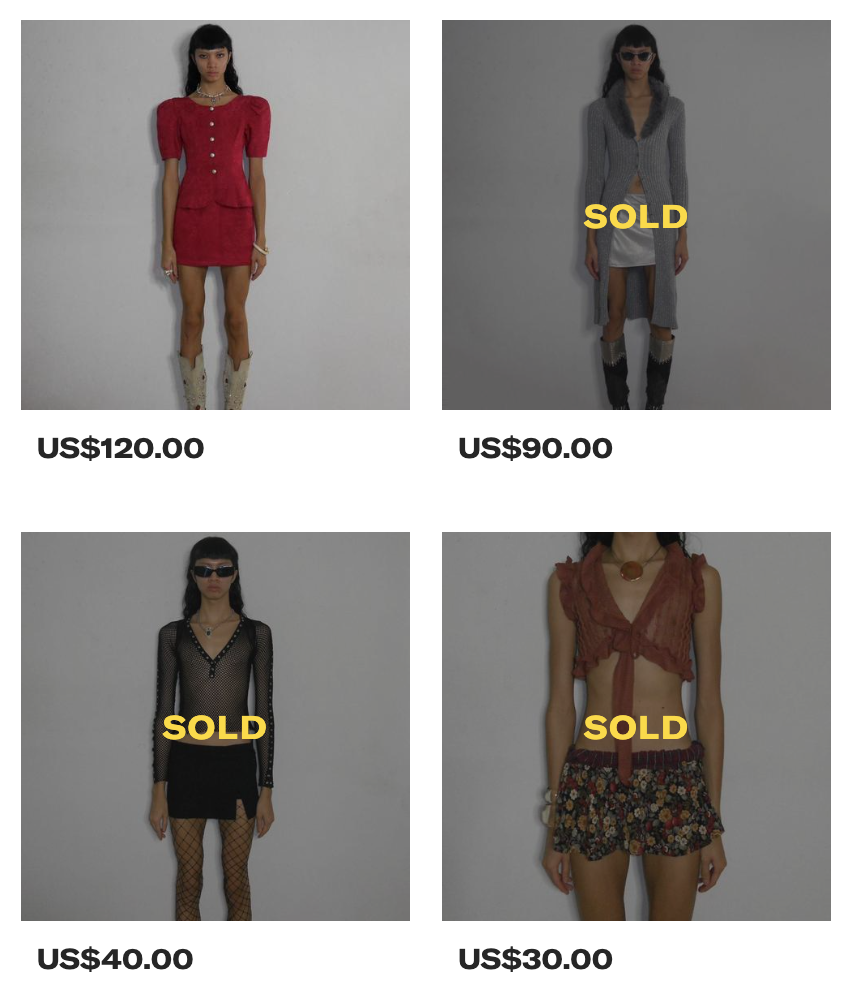
As Vox points out in an article that highlights the problematic side of the thrifting trend, the Depop influencers who are buying thrifted goods in bulk are clearing stores out of their best wares—and then marking them up in order to reap a profit. This could negatively affect those thrifters who rely on second hand clothing out of necessity, including low income individuals .
But if IRL vintage stores need to keep up with the competition in order to run their businesses, they have to stay relevant on social media. By creating hype on TikTok to drive traffic into an actual store, these shops are continuing to target a younger audience, further alienating the old school, die-hard thrifters. While thrift stores are clearly staying put, the environment they create and the consumers they attract will continue to be far from the good old days.
